With its fascinating history, mouth-watering food, cosmopolitan megacities and charming villages, it’s easy to see why travelers flock to Europe. There’s nothing quite like ascending the Eiffel Tower at night, sampling wine in the Tuscan countryside or strolling along Amsterdam’s canals — as long as you follow certain customs and traditions, that is!
Yes, Europe is amazing. Just make sure you understand military time and the metric system, can drive a stick shift and know better than to plug in your hairdryer. For first-time visitors, trying to figure out the continent’s nuances can lead to embarrassing or uncomfortable situations that can sour a holiday.
Thankfully, we’re here to help you learn what to do and, more importantly, what not to do. Read on to learn about some of the most common mistakes Americans make in Europe and helpful tips on how to avoid them at all costs.
Assuming Everyone Speaks English

Getty Images
Many Europeans have made an effort to learn English, so why not return the favor? Speaking a bit of the local language can go a long way, especially if you plan on going off-the-beaten-path.
You don’t have to be fluent, but knowing key phrases like “Buon Giorno” or “Wie geht es Ihnen” will earn you more respect than trying to communicate through drawings or awkward hand gestures.
Helpful Tip

Before you go, download Google Translate for on-the-go help with translations. Better yet, start practicing before you go.
There is a slew of free language learning apps available to help you start your trip off right.
Using Planes Instead of Trains
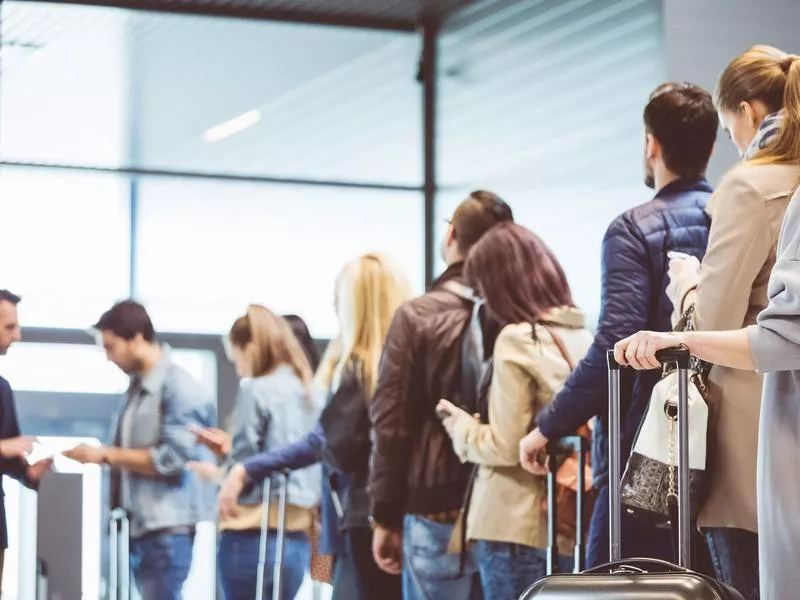
Getty Images
Europe has well-connected and extensive railways, but many travelers are tempted by budget airlines offering rock-bottom prices.
But when you factor in the time it takes to get between the city and these airports, not to mention those long security lines before your flight, traveling by train can still be a far better use of time and money.
Helpful Tip

While flying might sound like a time-saver, be sure to check which airport you’re actually flying to, or risk ending up hours away from your intended destination. In Stockholm, for example, a flight to Skavasta airport will land you more than 60 miles away from the city.
Imagine arriving late at night and then still having to take a long, expensive and uncomfortable bus ride when all you want to do is eat some meatballs and go to sleep.
Tipping
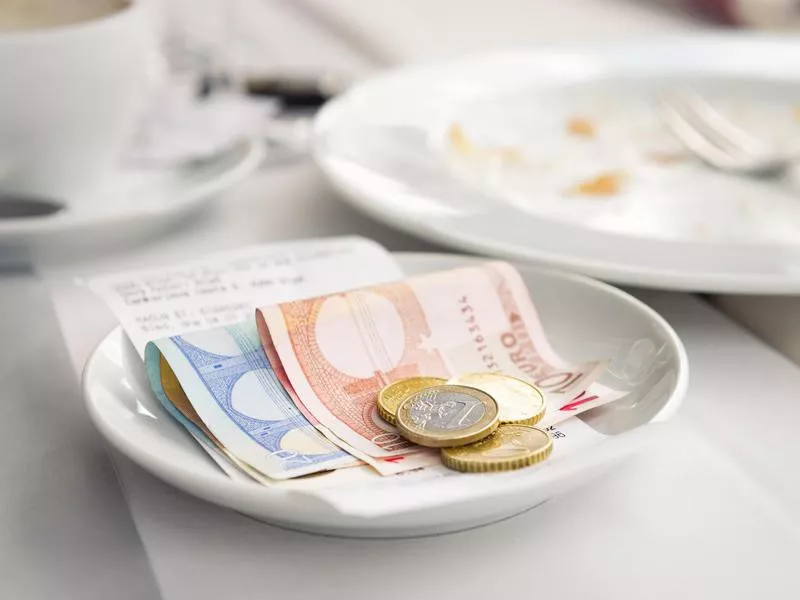
Getty Images
A country’s cuisine is a reflection of its culture, and eating can be one of the most fun parts of your vacation. However, dining out in Europe comes with certain nuances.
Tipping, for instance, can be especially confusing since it’s very common to do in the U.S.
Helpful Tip
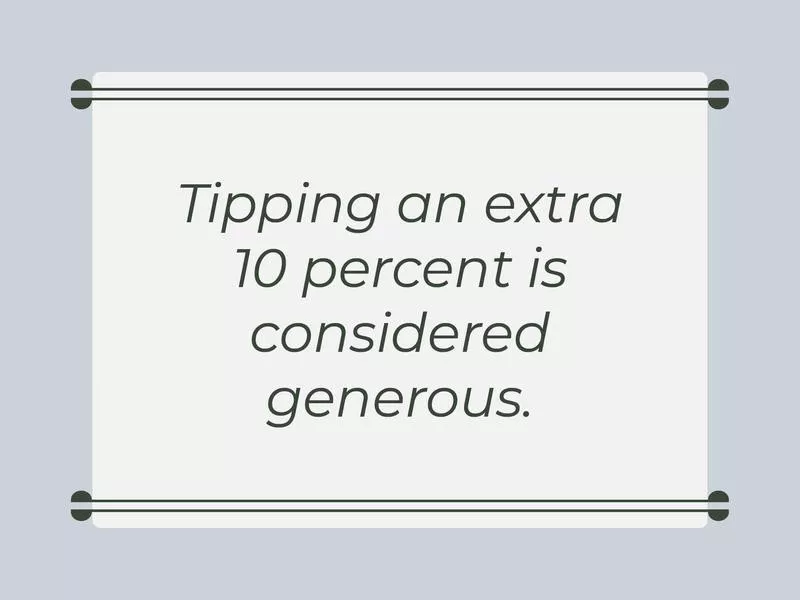
Gratuities are a great way to show your appreciation, but they aren’t necessary in Europe, where service charges are already built into a restaurant’s prices.
Even for exceptional service, tipping an extra 10 percent is considered generous.
Expecting Big Portions and Unlimited Beverages

Getty Images
Aside from wearing socks with sandals, asking for a “free refill” in Europe is one of the most embarrassing things an American tourist can do. While we love to supersize our drinks in the U.S., Europe offers more modest pours (for soda, anyway, wine and beer is a different story).
The same applies to food, where the emphasis is put on the amount of flavor, not the size of the plate. On the bright side, you’ll have plenty of room for dessert.
Helpful Tip

Another thing that’s pretty uncommon in Europe is asking for a to-go box.
Luckily, the smaller portions mean you’ll likely finish everything you order, but if you don’t, we recommend skipping the doggie bag to avoid an eye-roll.
Thinking Bread and Water Are Free

Getty Images
Many diners assume water is free, just like at home, but when a server asks you if you want still or sparkling (or gas, depending on the country), be prepared to pay for it.
The same goes for bread and, gasp, even the butter.
Helpful Tip

While the charges are small, if you’re on a tight budget, it’s best to skip the sparkling and cut the carbs.
Of course, if you’re a huge bread lover, it never hurts to do your research before. Countries like France (where eating bread is like brushing your teeth) do typically serve bread for free.
Eating American Food
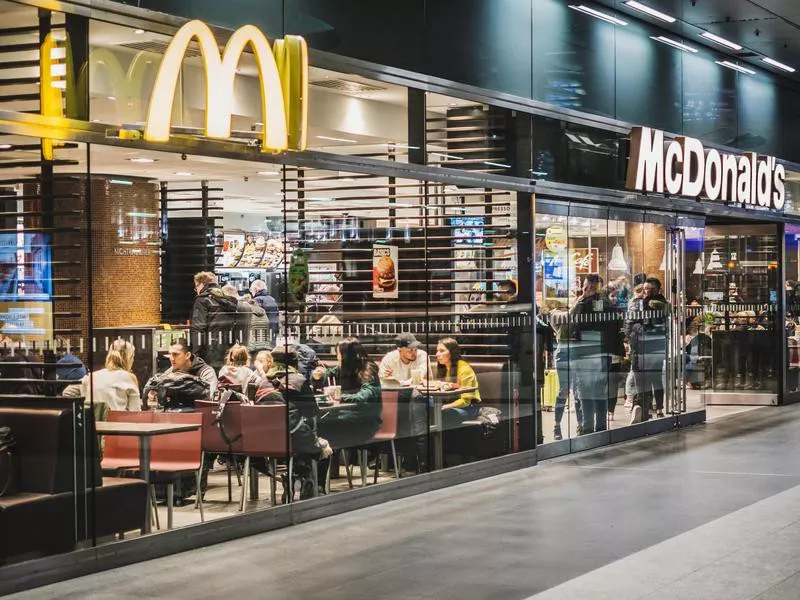
Getty Images
We don’t blame you if you’re not into trying fermented shark, but why go all the way to Europe to only eat at McDonald’s or Kentucky Fried Chicken?
It’d be a shame to miss those mouth-watering perogies in Poland or Spain’s famed paella.
Helpful Tip
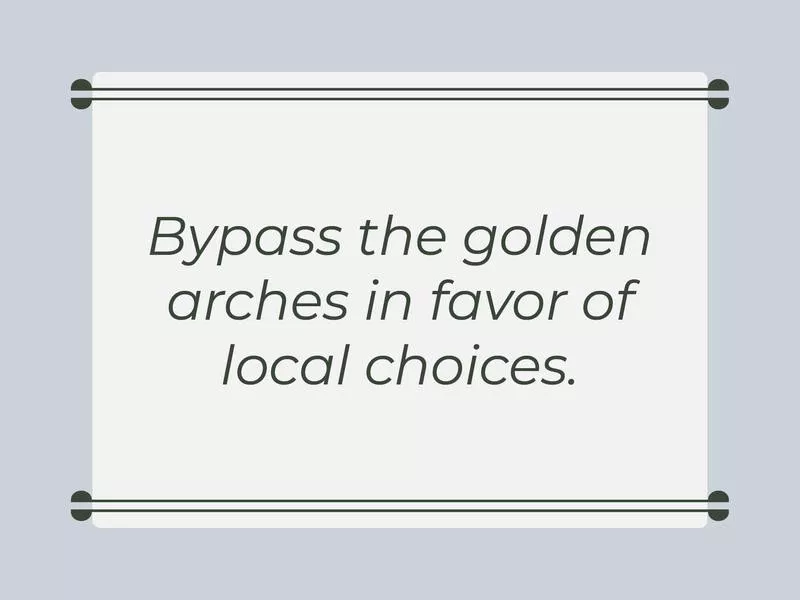
If you’re on a budget or simply enjoy fast food, bypass the golden arches in favor of local choices like krokets from Febo (Holland) or smoked fish from Nordsee (Germany).
Dining Near the Major Sites

Getty Images
Dying to see the Roman Colosseum? Fantastic, but the spaghetti and meatballs next door will likely earn a thumbs down. Want authentic fish and chips? The cafe next to Big Ben is anything but a fresh catch.
While long lines and hours spent on your feet might prompt you to run to the first cafe you see, your meal will likely be less authentic and far more expensive than going to someplace a bit farther from the action.
Helpful Tip
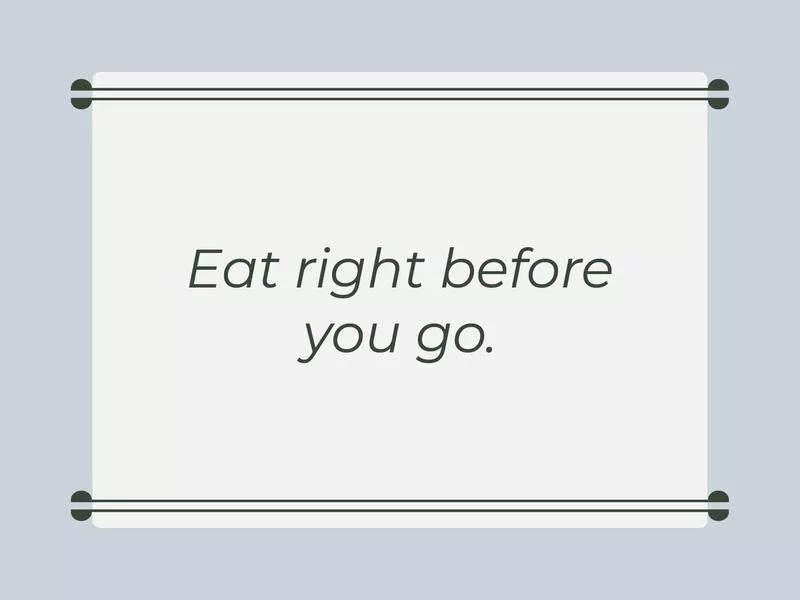
Plan your meals and activities accordingly. Eat right before you go so that you don’t get a huge craving as you’re exploring the Pantheon.
Don’t forget to factor in lines at major attractions and giving yourself some time to get lost.
Asking for Swiss Cheese or French Fries
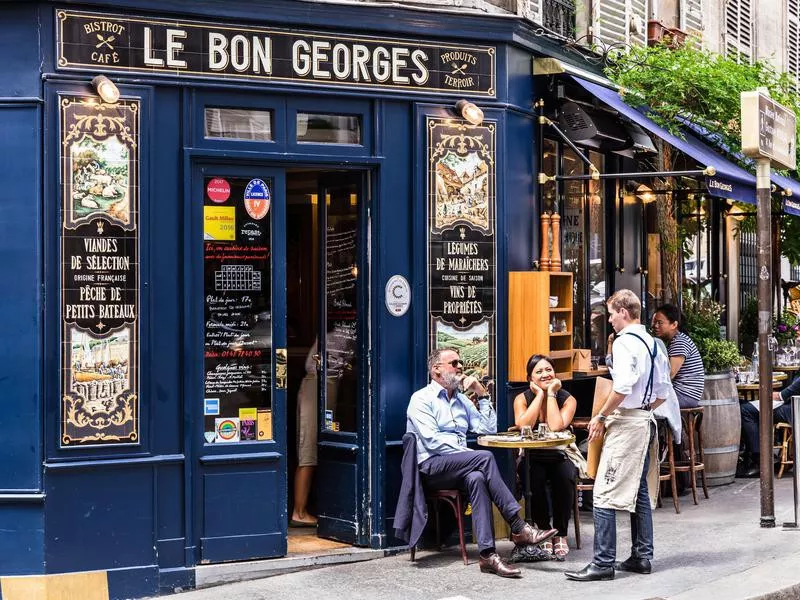
Getty Images
If you’re the kind of person who loves to get laughed out of restaurants, go ahead and ask for “Swiss” cheese in Switzerland. Here, it’s just cheese.
Same goes for ordering French fries in France. And don’t even dare do that in Belgium.
Helpful Tip

In Switzerland, you can be infinitely smarter and order Gruyère, Emmenthal, Appenzeller or any other kind of local cheese. Fun fact: There are more than 450 varieties from which to choose.
And in France or Belgium, just “frites” will do. Of course, in the United Kingdom, you’ll want to call them “chips.”
Not Having Cash or Carrying Too Much

Getty Images
We might be used to using a credit card just about everywhere in the U.S., but many taxis, museums and cafes still want cash in Europe.
It’s best to avoid exchange places (especially at the airport) and get money from an ATM.
Helpful Tip
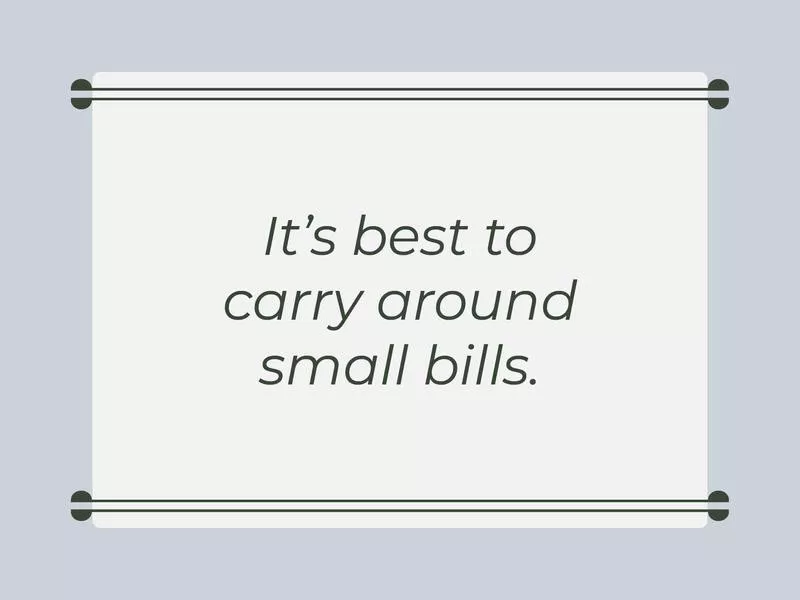
While those high fees might compel you to make a larger transaction, it’s best to carry around small bills to avoid getting all of your money picked from your pocket.
Not Knowing How to Drive a Stick Shift

Getty Images
Planning on taking a road trip? Don’t be like the average American, who shows up at a car rental agency expecting an automatic transmission. While this kind of vehicle is widely used in the U.S., Europeans still favor the stick shift.
So, if you prefer your own wheels to a plane or train, make sure you’re comfortable driving a five-speed.
Helpful Tip
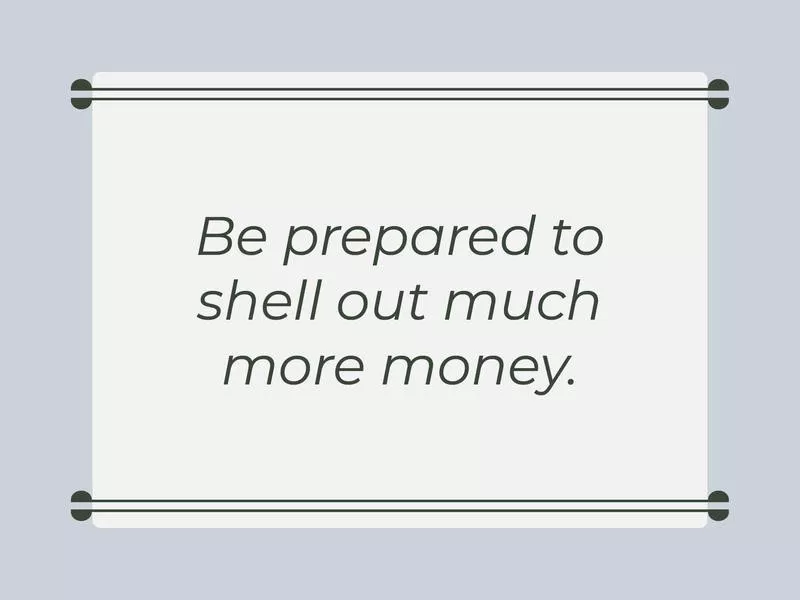
It’s important to note that if you’re absolutely opposed to the idea and lucky enough to find an automatic transmission, you should be prepared to shell out much more money.
This type of convenience will cost you hundreds more.
Tossing Your Coins

Getty Images
At home, there’s a good chance you’ll find more loose change in your couch than in your pocket. But you might want to think again before tossing those euros into the Trevi Fountain.
You might not be used to a coin being worth a euro or two, but at more or less a dollar per coin, you’ll be the chump for getting rid of all your change.
Helpful Tip
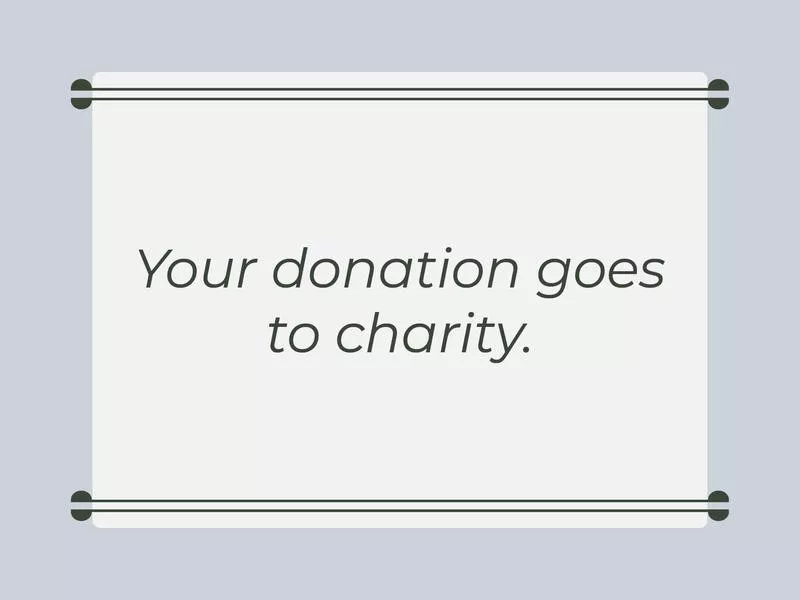
OK, we know that legend goes that tossing one coin into the Trevi Fountain means you’ll return to Rome, tossing two coins means you’ll return and fall in love, and tossing three coins means you’ll return, find love and marry.
So, if you absolutely must follow tradition, you can do so knowing that your donation goes to charity. In fact, about $1.7 million each year is collected from the fountain and donated to support soup kitchens, shelters and more.
Asking for the Restroom
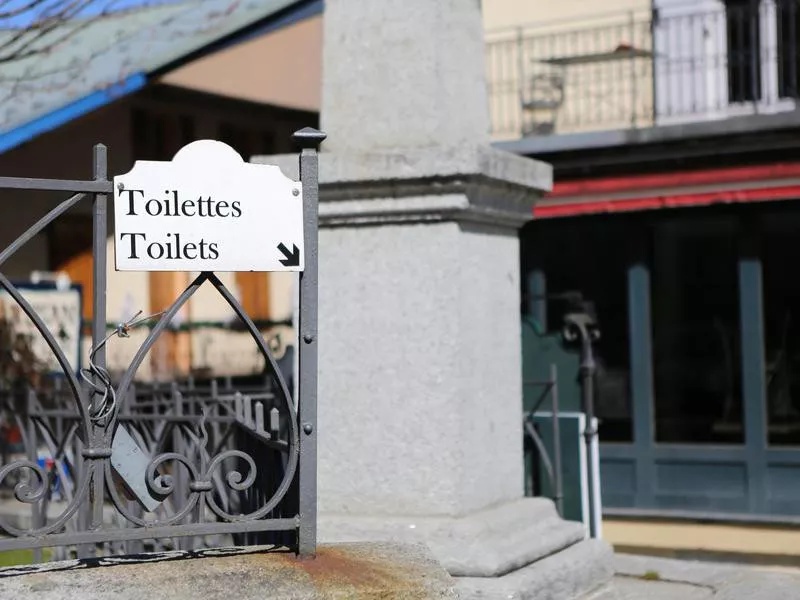
Getty Images
You’d think using a bathroom would be a straightforward experience, but some Americans seem to struggle in Europe. To avoid becoming flushed with embarrassment, learn what it’s most commonly called in the country you’re visiting.
Don’t ask where the restroom is because in most places they’re called toilets or sometimes water closets.
Helpful Tip
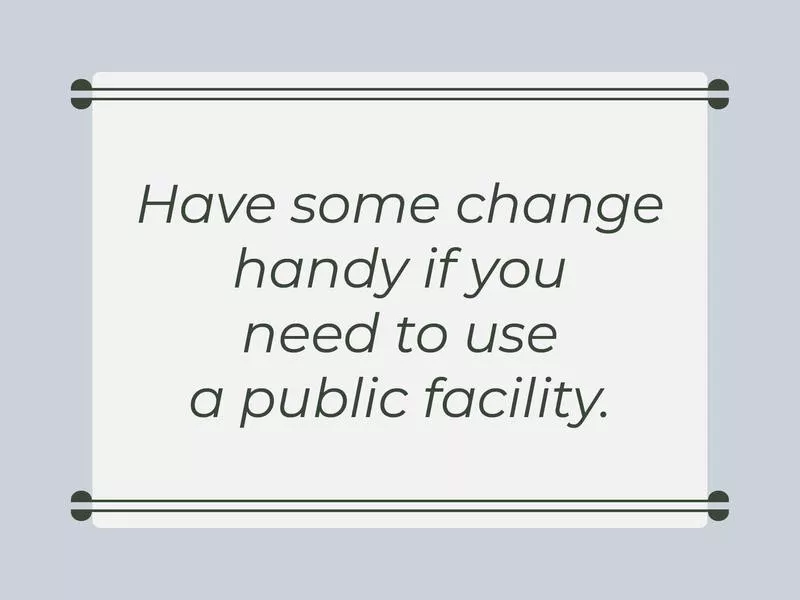
Have some change handy if you need to use a public facility because it’s often not free to use them (and another reason you should hold on to those coins)!
Also: If you can’t find a handle to flush, look for the string. Several European toilets still use this mechanism.
Not Learning the Correct Time and Dates
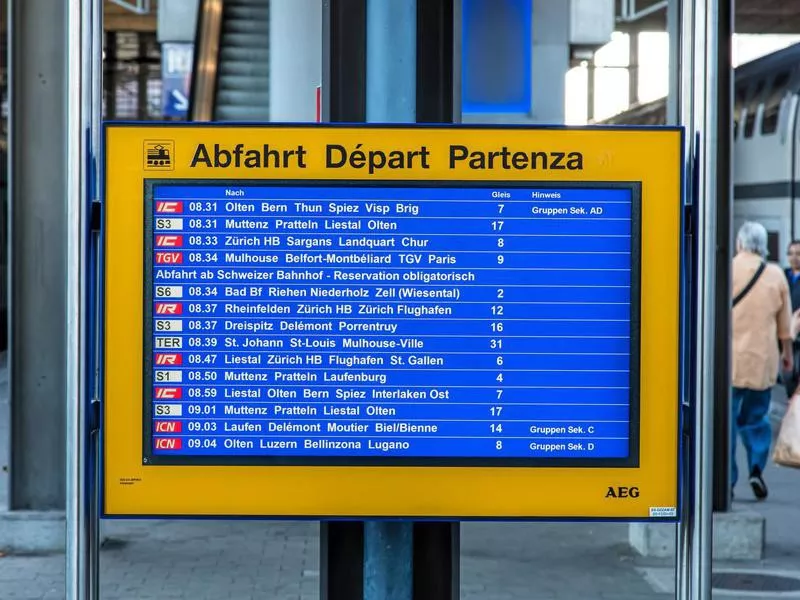
Getty Images
In Europe, time is literally 24 hours and is written in military time.
So, if you book a train for 03:00, be prepared to go without sleep or wake up in the middle of the night because that means 3 a.m. Wanted a train at 3 p.m.? That’s 15:00.
Helpful Tip
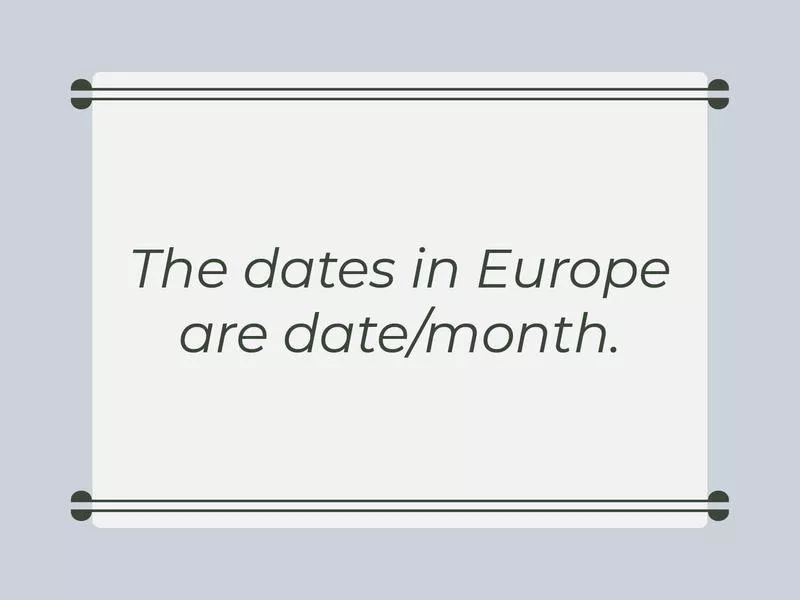
To avoid showing up way early for your dinner reservation or missing a flight, switch the clocks on your phones, watches and computers to 24-hour time.
To further confuse you, the dates in Europe are date/month. So, don’t book a beach resort on 7/2 unless you plan on taking a polar plunge in February.
Trying to See 20 Countries in Two Weeks

Getty Images
A great thing about visiting Europe is that it’s entirely possible to visit a few different countries in one trip, but trying to see the entire continent is just plain exhausting.
Why run from place to place just to check off a box or get a few Instagram likes when you can spend several days absorbing a city’s culture, enjoying its cuisine and appreciating the moment instead of stressing over what’s next?
Helpful Tip
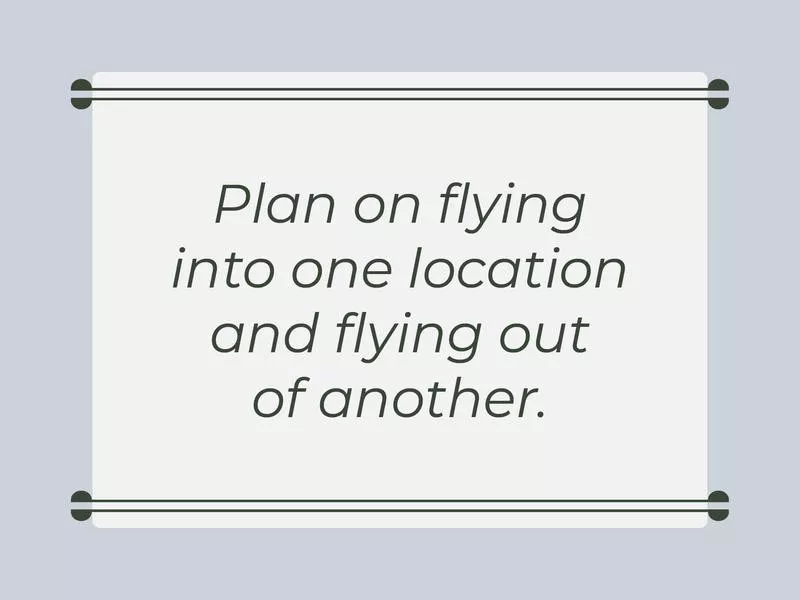
If you do want to see a few countries on your European vacation, try visiting ones that are close together. Also, plan on flying into one location and flying out of another to maximize your time.
For instance, if you want to see both France and Spain, try flying into Paris and making your way south to fly out of Barcelona or Madrid.
Expecting Modern Luxuries

Getty Images
That charming little inn may not seem so great once you get there and realize you don’t have Wi-Fi or television. But don’t be like other Americans and expect a really old building to have modern conveniences, like elevators and, in some cases, shower curtains.
Or worse yet, don’t complain to the hotel staff or write a scathing TripAdvisor rant about how you were deceived. Instead, do your research.
Helpful Tip

If you need things like air-conditioning, Wi-Fi and television, you’re better off at a Hilton or Marriott than a historic inn.
But if you want to sleep in a piece of history, remember that your accommodations may be a bit dated — like all the way back to the 12th century dated — and that’s part of their charm.
Traveling With a Humongous Suitcase
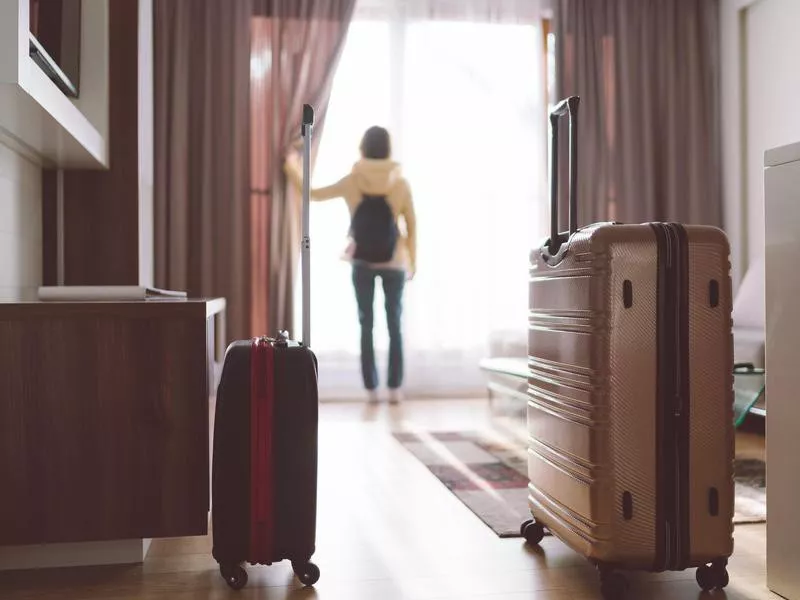
Getty Images
You might think you need six outfits a day, but what happens when you have to drag your Godzilla of a suitcase up steep hills or six flights of stairs? It’s better to rely on smaller-sized luggage in Europe.
And that goes for luggage with wheels, too, because a lot of the streets are made of cobblestone or some other surface that doesn’t accommodate wheels very easily.
Helpful Tip
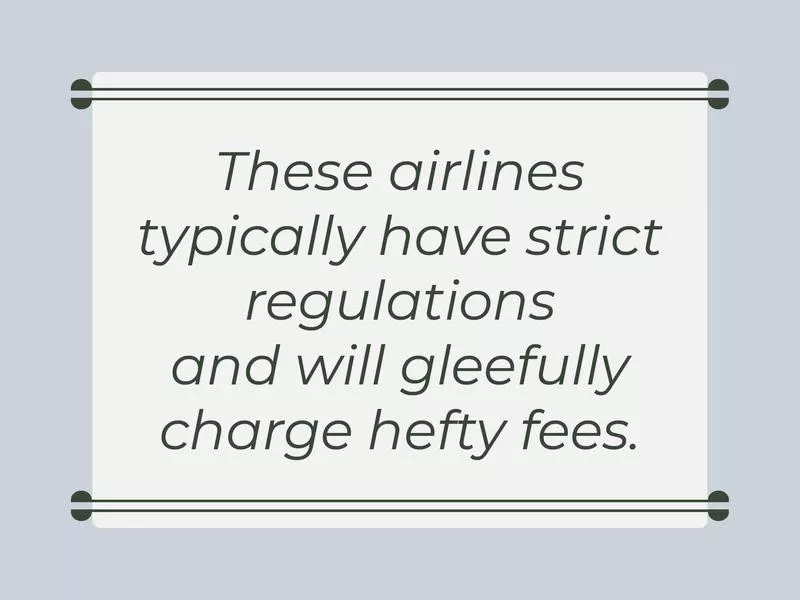
This rule of thumb is especially important if you plan on traveling on one of those infamous European budget airlines (don’t say we didn’t already warn you).
These airlines typically have strict regulations and will gleefully charge hefty fees for every centimeter or kilogram (yes, they use the metric system here people) over the limit.
Plugging the Wrong Thing Into the Socket
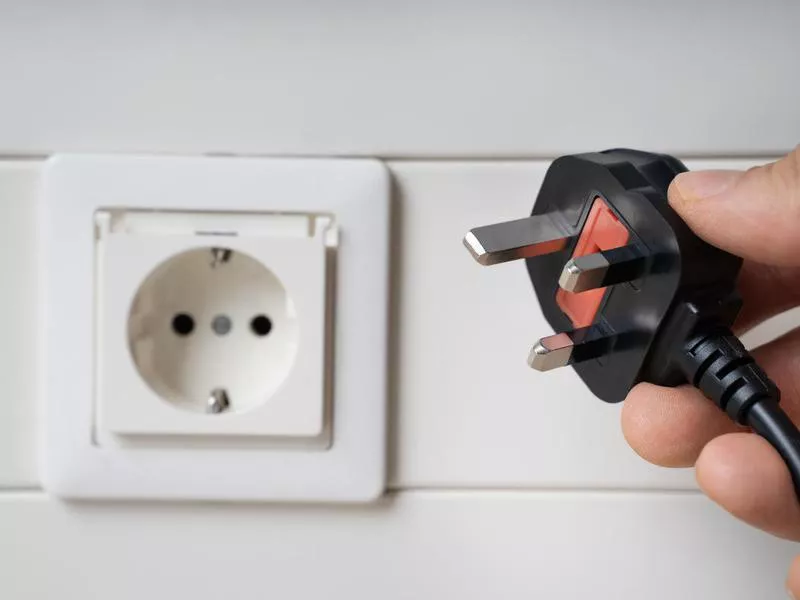
Getty Images
Want to blow a fuse or possibly start a fire? Go ahead and plug your U.S. hairdryer into a European socket.
Don’t fret, though. It’s easy to get confused with European electricity. The volts are different and the sockets look weird and are sometimes hidden. Some come with on/off switches and outlets vary from country to country.
Helpful Tip

So, if you’re visiting multiple places, make sure to get an adaptor for each place.
Better yet, buy an all-in-one adapter like this one.
Not Dressing the Part
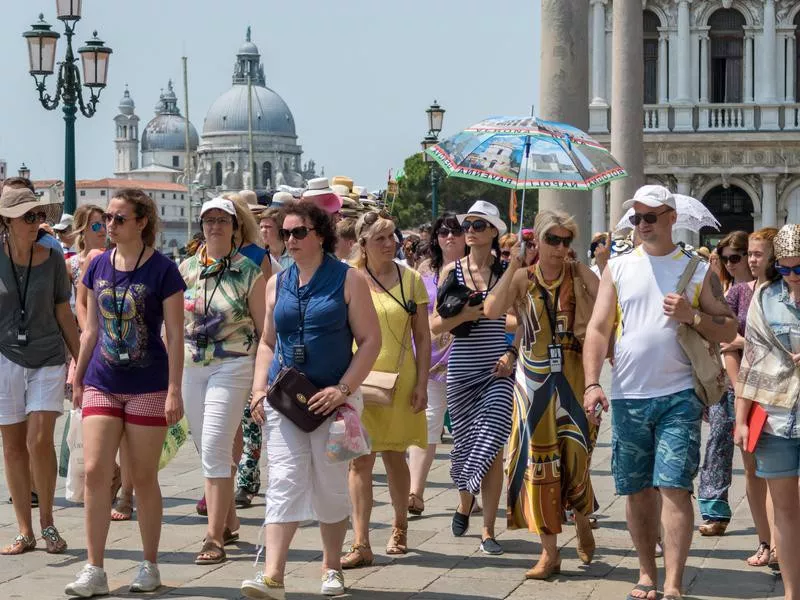
Getty Images
While it may seem appropriate to wear shorts and flip flops on a hot summer day, don’t expect to be let into the Vatican’s holy sites or that fancy restaurant in Barcelona.
While it’s awesome that you’re proud of your college or have a favorite football team, sticking out as a tourist also means you may get treated like one.
Helpful Tip

Another way to stick out like a tourist is with a selfie stick, camera around your neck or having your iPhone constantly out to check your GPS at every turn.
And this doesn’t mean everyone will want to snap selfies with you because you’re a foreigner. It’s more like you’ll be an easier target for pickpockets.
Only Visiting Popular Places
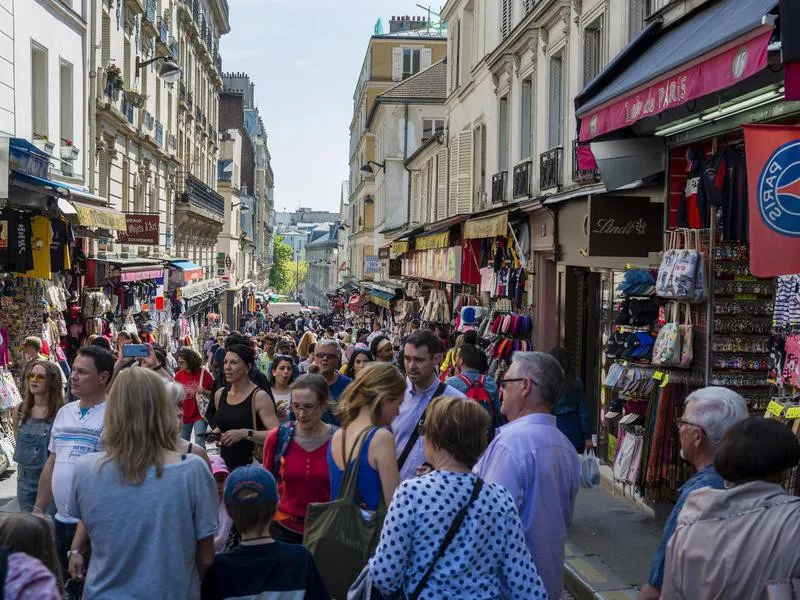
Getty Images
Rome, London and Berlin are marvelous, but it’s a shame that many travelers only see Europe’s western side. For a fraction of the cost, you can bathe in Hungary’s thermal waters, stroll along Slovenia’s magical Lake Bled or see grand architecture in Belarus.
You can also explore wine regions, rolling hills and beautiful beaches in these parts — with way fewer people.
Going in August
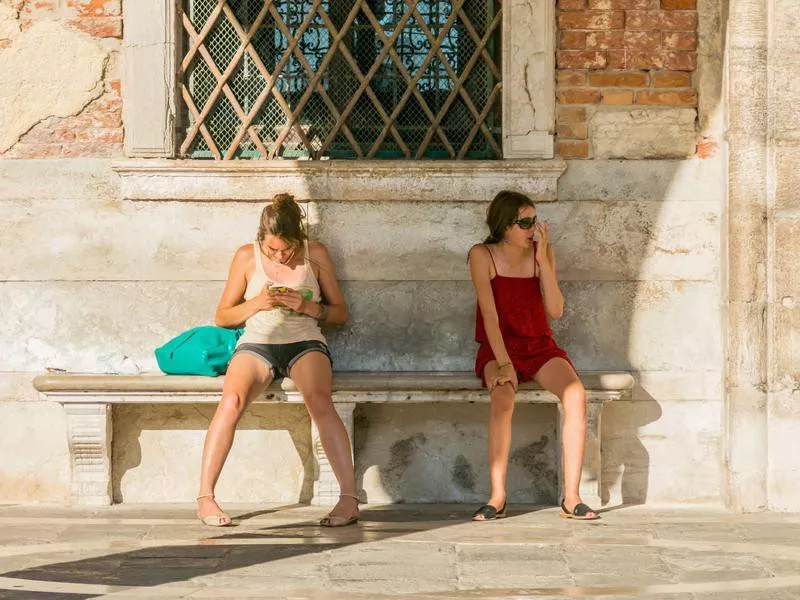
Getty Images
August can be a great time to travel, just not to Europe. Big cities can be stifling hot (and, remember, don’t assume your hotel room comes air-conditioning) and coastal towns are super crowded and have their highest prices of the year.
It’s also the time when many Europeans go on vacation, so flights and trains are more expensive and numerous shops and restaurants could be closed.
Helpful Tip
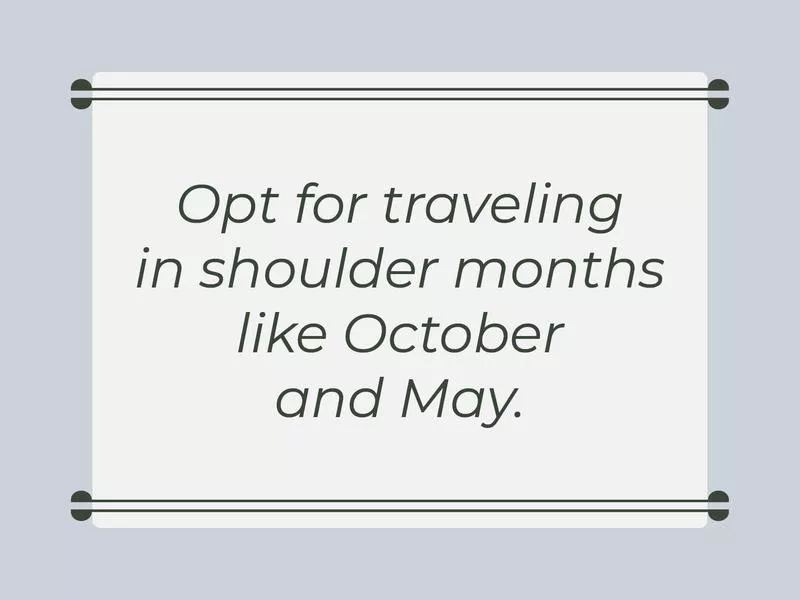
Opt for traveling in shoulder months like October and May instead when both the weather and the prices are plenty agreeable.